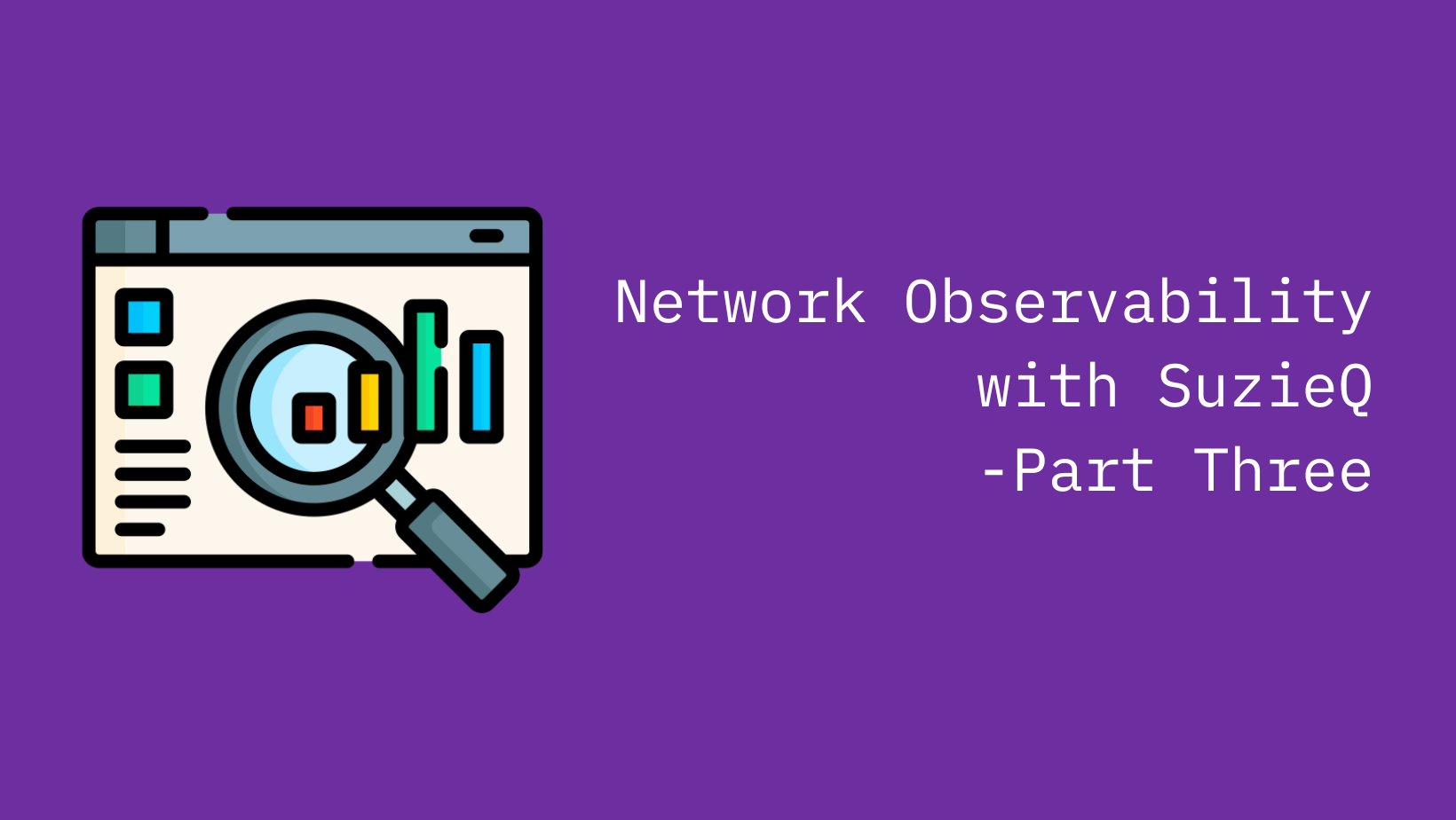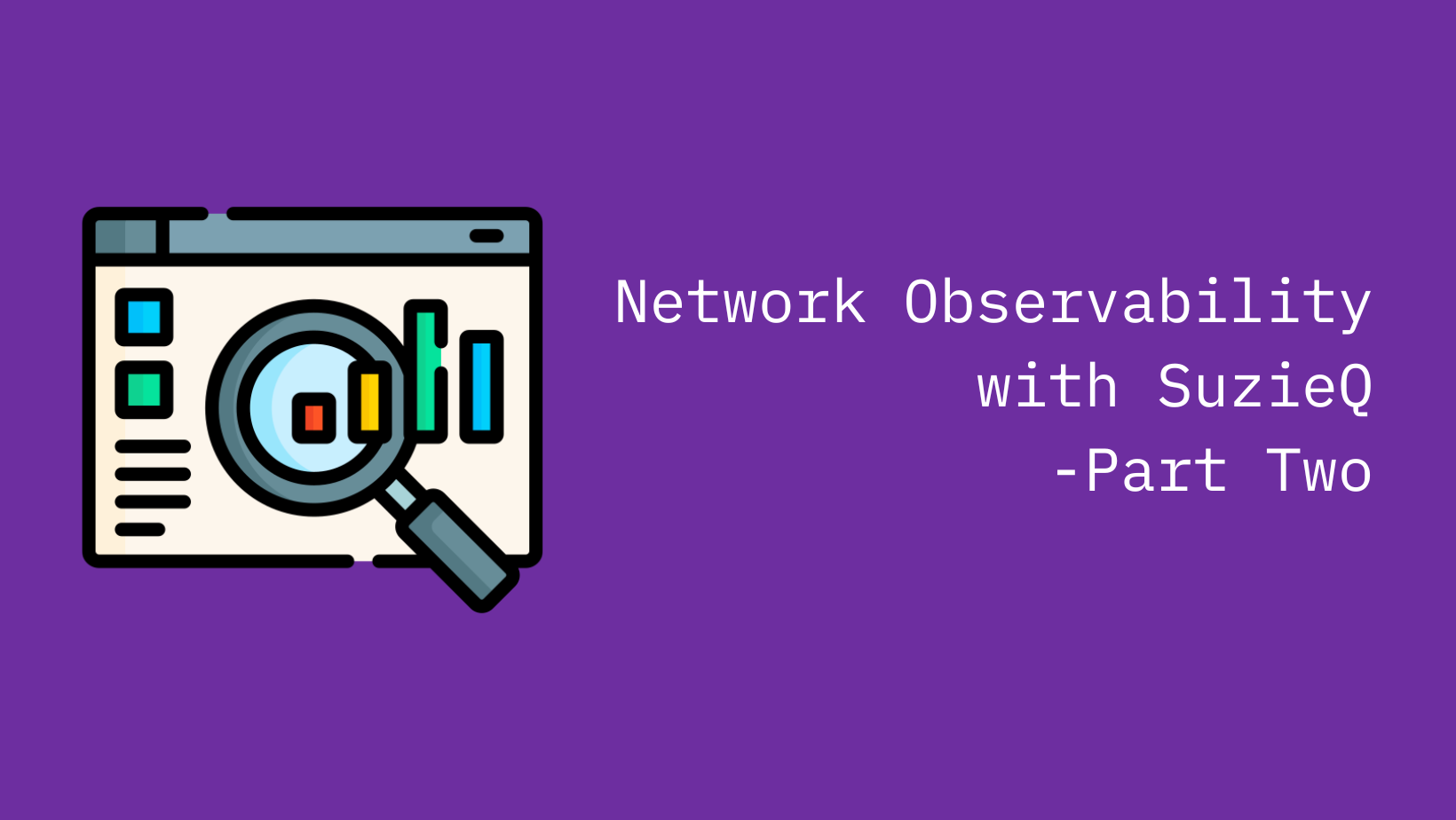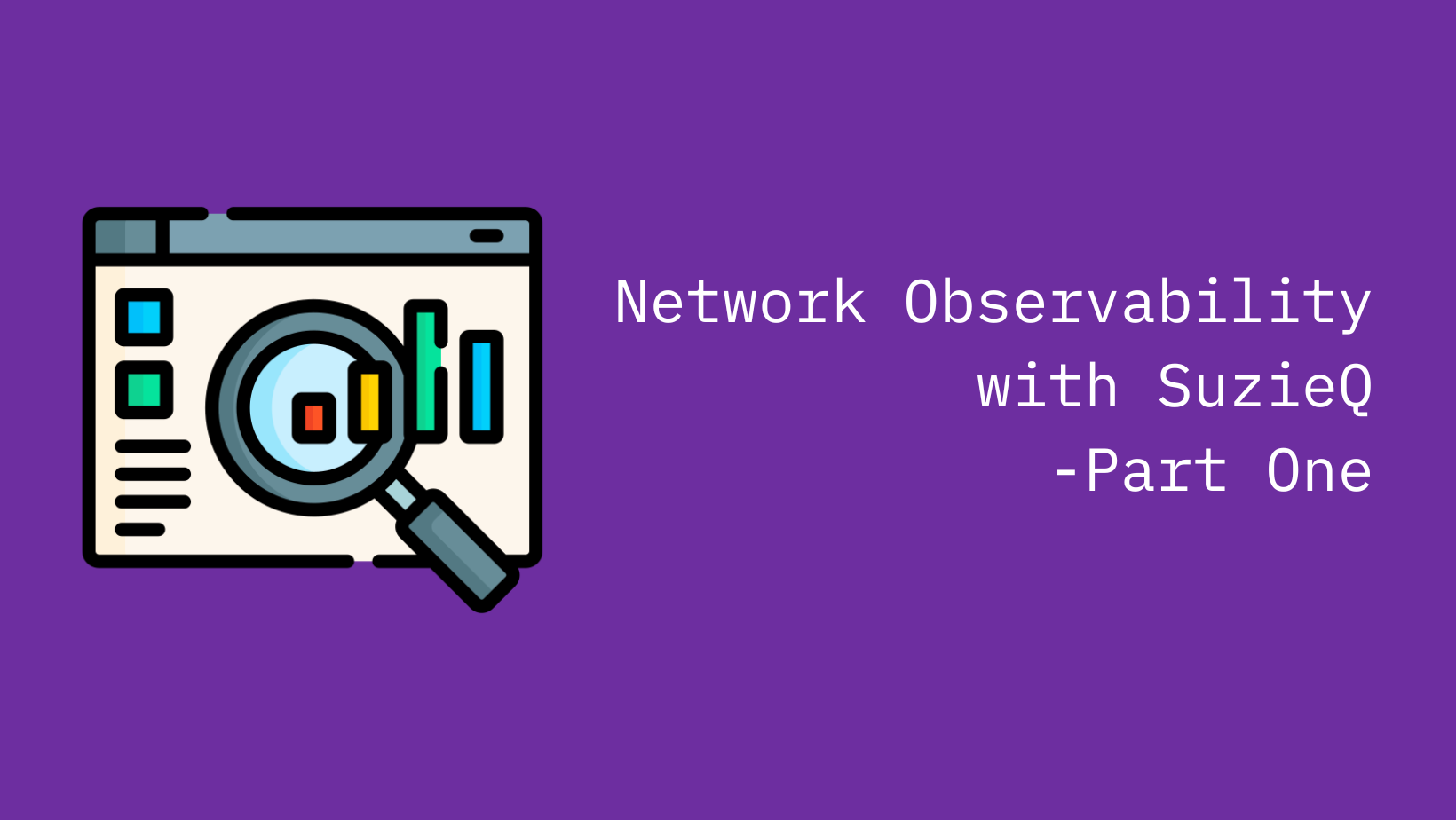Live Training: Build Your Own Networking Lab
 This Friday at 1pm ET, Bruce McDougall and I are teaching a live class on using Containerlab to build and automate network labs. From the course description:
This Friday at 1pm ET, Bruce McDougall and I are teaching a live class on using Containerlab to build and automate network labs. From the course description:
This course will guide learners through the tools and techniques to build virtual labs either locally or on common cloud services, so you can become more proficient at understanding, designing, monitoring, and troubleshooting networks. The course begins with obtaining and starting the basic tools required to build and test network labs using open-source and freely available tools. The instructors will build a variety of network topologies, including data center and campus, to help learners understand how to test in different environments.
Tech Bytes: Journey to SSE with HPE Aruba Networking (Sponsored)
When it comes to SSE, it’s helpful to know the vendor’s history and approach to understand if it’s the best fit for your organization. HPE Aruba’s SSE journey started when it acquired Axis Security, a company focused on solving the problem of third party access. Because of that focus, HPE Aruba says its SSE is... Read more »netlab 1.8.3: RIPv2, BGP Route Servers
During the ITNOG8 netlab presentation, I jokingly said something along the lines “all that’s missing is RIPv2 and Babel.” That’s no longer true; someone asked me how hard it would be to add RIPv2 to netlab, and I said, “give me a few days 😎”
Other new features in netlab release 1.8.3 include support for BGP route servers (and route server clients), BGP Link Bandwidth community, and OSPF/BGP validation plugins for Arista EOS, Cumulus Linux and FRR. We also fixed the installation scripts to work with Ubuntu 24.04 and Debian Bookworm.
For more details, read the release notes.
netlab 1.8.3: RIPv2, BGP Route Servers
During the ITNOG8 netlab presentation, I jokingly said something along the lines “all that’s missing is RIPv2 and Babel.” That’s no longer true; someone asked me how hard it would be to add RIPv2 to netlab, and I said, “give me a few days 😎”
Other new features in netlab release 1.8.3 include support for BGP route servers (and route server clients), BGP Link Bandwidth community, and OSPF/BGP validation plugins for Arista EOS, Cumulus Linux and FRR. We also fixed the installation scripts to work with Ubuntu 24.04 and Debian Bookworm.
For more details, read the release notes.
Network Observability with SuzieQ: Part Three

In part 2 of this multipart series on network observability with SuzieQ, we looked at how to setup SuzieQ using docker compose. In this part, we will look at how to interact with the data collected by SuzieQ using the command line interface (CLI) and its REST API.
If you have not read Part One and Part Two yet, I recommend you read it first before proceeding with this part.
SuzieQ CLI
SuzieQ provides a command line interface to interact with the data it has collected. Like any Linux CLI, SuzieQ CLI providers command completion when options are available and also provides help for each command. All commands follow a common structure <table_name> <verb> <filters>. This will make more sense when we start looking at some examples.
Let us start by running the SuzieQ CLI. If you have been following along with the previous parts, you should have the SuzieQ docker container running and you can connect to the SuzieQ CLI by running the docker attach suzieq_cli command. Once you are connected, you will see a prompt like this suzieq>. This is the SuzieQ CLI prompt.
root@sudarshanv:/suzieq/suzieq# docker attach suzieq_cli
suzieq>Connecting to SuzieQ CLI
From here you can get Continue reading
Palo Alto – Find and Remove Unused Objects

If you work with Palo Alto firewalls, you might know there's no straightforward way to find and remove unused address objects. When I googled for solutions, I found that others suggested using Expedition or some kind of automation. In this blog post, I'll show you a very simple script to find these objects and remove them if needed.
Expedition or Automation
I tried using Expedition a few years back, but it required a dedicated VM, and I struggled to wrap my head around how to use it. I just needed a simple solution. While I could also use Palo Alto's REST API or even the Python SDK, setting everything up takes a bit more time.
Palo Alto 'Set' Commands
Then it occurred to me that Palo Alto provides 'set' commands, and you can use the 'delete' version of those commands to remove something. With that in mind, I thought, "Hmm, what if I get the whole config from either the firewall or Panorama in the 'set' format, run it through a regex, and extract all the object names?" Once I have the object names, I can go through the configuration line by line to check if the objects are Continue reading
The Increasing Impatience Of The Speed Of The PCI-Express Roadmap
Richard Solomon has heard the rumblings over the years. As vice president of PCI-SIG, the organization that controls the development of the PCI-Express specification, he has listened to questions about how long it takes the group to bring the latest spec to the industry. …
The Increasing Impatience Of The Speed Of The PCI-Express Roadmap was written by Jeffrey Burt at The Next Platform.
HN738: Reducing Complexity With Fortinet’s Unified SASE (Sponsored)
Fortinet’s Unified SASE provides consistent security controls and policies both for traditional campuses and the hybrid workforce.. Nirav Shah joins us to explain how Fortinet is positioned to do this: a foundational software developed for 20 years, a network of over 140 POPs, a security lab with over 1,000 researchers, continuous ZTNA verification proxies, and... Read more »Hedge 230: Preparing for Layoffs
You will probably be laid off at least once in your career–we no longer live a world of “permanent positions,” or even a world where people are in complete control of their “work destiny.” It’s important, then, to prepare to be laid off, made redundant, or impacted by a RIF, today. Mike Bushong joins Eyvonne Sharp, Tom Ammon, and Russ White in a wide-ranging discussion about preparing to be laid off.
Stacking Up Intel Gaudi Against Nvidia GPUs For AI
Here is something we don’t see much anymore when it comes to AI systems: list prices for the accelerators and the base motherboards that glue a bunch of them together into a shared compute complex. …
Stacking Up Intel Gaudi Against Nvidia GPUs For AI was written by Timothy Prickett Morgan at The Next Platform.
IPB153: Leveraging ICMPv6 to Troubleshoot Network Issues
If you don’t blame “destination unreachable” messages on DNS servers, are you even a real network engineer? All joking aside, Johannes Weber joins the show today to teach us how to use ICMPv6 to troubleshoot network issues, pinpointing if the problem is within your network or outside of it. He walks us through identifying possible... Read more »Worth Reading: Cisco SD-Access and IoT Devices
Dan Massameno wrote a series of blog posts describing the challenges you might encounter when connecting Internet-of-Things1 devices to a Cisco SD-Access network. It is an absolute must-read if you have to deal with IoT devices.
-
Reading some of his caveats, you’ll quickly confirm the alternate meaning of the IoT acronym: Internet-of-Trash. ↩︎
Worth Reading: Cisco SD-Access and IoT Devices
Dan Massameno wrote a series of blog posts describing the challenges you might encounter when connecting Internet-of-Things1 devices to a Cisco SD-Access network. It is an absolute must-read if you have to deal with IoT devices.
-
Reading some of his caveats, you’ll quickly confirm the alternate meaning of the IoT acronym: Internet-of-Trash. ↩︎
A Journey from Intern to Front-End Developer
The post A Journey from Intern to Front-End Developer appeared first on Noction.
What Is Python concurrent.futures? (with examples)

As a Python learner, I've faced several challenges, but so far, one of the most difficult topics to understand has been concurrency. In the beginning, it can be incredibly confusing, especially if you're a beginner. The aim of this blog post is to simplify concurrency by breaking it down with a couple of examples and an analogy to help you understand this challenging concept. So, let's get started.
Why does Concurrency Matter?
When writing Python programs, you might find yourself needing to execute multiple tasks simultaneously or in parallel. This is where concurrency comes in. Concurrency allows your program to run multiple tasks at the same time, which can significantly improve performance and efficiency, particularly when handling time-consuming tasks.
The Magic of Python concurrent.futures
Python's concurrent.futures module simplifies concurrent programming by providing a high-level interface for asynchronously executing callable (functions/methods). ThreadPoolExecutor and ProcessPoolExecutor are two popular classes within this module that enable you to easily execute tasks concurrently, using threads or processes, respectively.
When deciding between ThreadPoolExecutor and ProcessPoolExecutor, consider the following analogy - ThreadPoolExecutor is like having multiple chefs in a shared kitchen, while ProcessPoolExecutor is like having multiple chefs, each with their own kitchen.
ThreadPoolExecutor is Continue reading
NAN065: The Excitement and Trepidation of Automation with Scott Robohn
In part two of Scott Robohn’s interview, Scott tells us about his experience starting his own business and co-founding the Network Automation Forum and the AutoCon conference series. He describes the strong desire among many engineers to drive network automation forward, and how AutoCon creates a community to help make that happen. He and Eric... Read more »Celebrating 10 years of Project Galileo

One of the great benefits of the Internet has been its ability to empower activists and journalists in repressive societies to organize, communicate, and simply find each other. Ten years ago today, Cloudflare launched Project Galileo, a program which today provides security services, at no cost, to more than 2,600 independent journalists and nonprofit organizations around the world supporting human rights, democracy, and local communities. You can read last week’s blog and Radar dashboard that provide a snapshot of what public interest organizations experience on a daily basis when it comes to keeping their websites online.
Origins of Project Galileo
We’ve admitted before that Project Galileo was born out of a mistake, but it's worth reminding ourselves. In 2014, when Cloudflare was a much smaller company with a smaller network, our free service did not include DDoS mitigation. If a free customer came under a withering attack, we would stop proxying traffic to protect our own network. It just made sense.
One evening, a site that was using us came under a significant DDoS attack, exhausting Cloudflare resources. After pulling up the site and seeing Cyrillic writing and pictures of men with guns, the young engineer on call followed the Continue reading
Network Observability with SuzieQ: Part Two

In part One of this multipart series, we covered the introduction to SuzieQ and some of the features of SuzieQ. In this part, we will cover how to set up SuzieQ using Docker Compose. If you have not read Part One yet, I recommend you read it first before proceeding with this part.
Setting up SuzieQ using Docker Compose
Setting up SuzieQ with Docker Compose simplifies deployment and management. Docker Compose is a tool for defining and running multi-container docker applications using a single YAML file. We’ll use a pre-built SuzieQ Docker image from Docker Hub, maintained and regularly updated by the SuzieQ team, to ensure you have the latest features and improvements.
Prerequisites
Before we start, make sure you have the following installed on your machine:
- Docker
- Docker Compose
Initiate Your Suzieq Setup
We'll begin with creating necessary files and directories. This will include:
suzieq/: Directory to store configuration files for SuzieQparquet/: Directory to store the Parquet database Continue reading
Network Observability with SuzieQ: Part One

Fresh out of attending Autocon1 (Network Automation Forum) in Amsterdam, I was excited to try out SuzieQ, a network observability tool that I heard a lot about. Though I had heard about SuzieQ before, and even tried it out in a lab environment before, I wanted to dive deeper into it and see how it could help me in my day-to-day work now that i was in a 100% network automation role.
What we will cover in the multipart series
In this multipart series, we will cover the following topics:
- Introduction to SuzieQ - Part 1
- Setting up SuzieQ using Docker Compose - Part 2
- Interacting with SuzieQ data - Part 3
Introduction to SuzieQ
SuzieQ is a network observability tool that provides a snapshot of the network at a given point in time. It collects data from network devices and stores it in a database at specified intervals. This data can then be queried to get insights into the network. It allows for us to have a historical view of the network and help us answer questions like What changed in the network between 2 points in time? or What is the state of the network at a given Continue reading